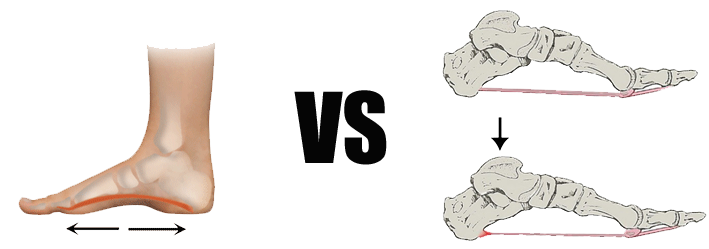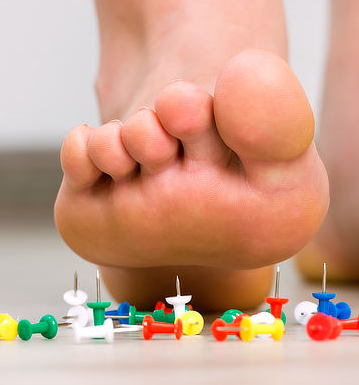Heel Spur
What is a heel spur?
A calcaneal spur, also known as a heel spur, is a small osteophyte which is a bony protrusion located underneath the calcaneus. This condition starts to form when the heel bone is consistently exposed to stress and as a result calcium deposits are built underneath the bottom of the heel bone and ongoing stress in the area can lead to a spur-shaped deformity. There is some thought that this boney development is the bodies way of protecting our arch ligaments from ongoing stress by laying down calcium deposits to add stability to the plantar fascia.
Why does it develop and how does it specifically form?
- Longitudinal Traction Hypothesis (Sidewards Traction)
- Repetitive traction of the insertion of the plantar fascia
- Calcaneus stress leads to calcification
- Influenced by activity and foot posture/mechanics (flat feet/high arched feet)
- Vertical Compression Hypothesis (Downwards Compression)
- Calcaneal spur develops from compression, not traction
- Mechanism involves fat pad compression leading to decreased shock absorption causing calcification under the heel
- Highly influenced by age and weight

Heel spurs are much more common in females, in people who are overweight and in people over the age of 40 which is due to the repetitive stress that we put on our heels through walking and running throughout our life.
X-rays are a commonly used imaging technique to evaluate the possibility of a bone spur as an indication of your heel pain. A bone spur, if it is present in this location, is probably not the cause of your pain as 38% of people have a heel spur without any pain! Heel pain is commonly not from the spur itself but rather from the insertion of the plantar fascia into the heel bone but it is evidence that your plantar fascia has been exerting excessive force on your heel bone for an extended time frame.
Symptoms – What does it feel like?
 Focal point of pain +/- redness and swelling – tender to touch or step.
Focal point of pain +/- redness and swelling – tender to touch or step.- Pain with first thing in the morning.
- Intermittent or chronic pain with walking, jogging or running.
- Described as stabbing sensation with initial steps – feels like ‘walking on a stone’.
- Dull aching pain post-activity or end of day.
- Commonly presents in conjunction with plantar fasciitis
Who is at risk of heel spur formation?
- Age: Middle aged and older individuals 40-60 years old.
- Activities: Athletic people or those in engage in high impact sports including running, jumping and dancing.
- Jobs requiring excessive standing: Work or activities that require to constantly be on your feet especially on hard surfaces.
- High bodyweight: High BMI leads to stress and strain to intrinsic structure of feet.
- Arthritic conditions: Can change gait and increase stress reaction to bone and ligaments.
- Very High OR Very Low Arches: Affects shock absorption properties – either not flexible enough or too much traction/pull at arch.
- People wearing poor footwear: Inappropriate shoes for foot type and activity leads to increased heel stresses.
- Pregnancy: Sudden weight gain and ligament laxity from hormones can place significant traction and cause pain to your feet.
Treating a heel spur
Treating a heel spur is rarely done in isolation as it commonly isn’t the cause of the pain but rather a result of long term stress in the area to the plantar fascia. The heel spur is a sign that things have been building for some time and the treatment for heel spurs is very similar to that of plantar fasciitis (as they present together).
Initial treatments such as wearing the correct shoes, improving the strength and flexibility of the arch and foot taping to improve the padding under the heel are great to provide short term pain relief. There is also some heel lifts and cushioned pads which are easy and great at reducing heel pressures. For more persistent cases orthotics to support the plantar fascia and reduce the stress in the heel combined with night splints, injections and shock wave are all options that help reduce heel spur pain – check them out in detail on our treatment options list!
